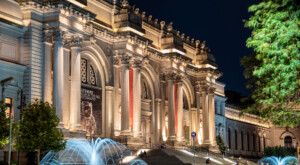The Musée d’Orsay in Paris has announced its first-ever virtual reality (VR) experience as part of a new Van Gogh exhibition.
The museum has partnered with Vive Arts on the VR experience, called ‘La Palette de Van Gogh’ and co-produced by Lucid Realities and Tournez s’il vous plaît.
The attraction takes inspiration from the last surviving paint palette used by Vincent van Gogh, now held in the Musée d’Orsay’s permanent collection.
Guests will experience a virtual landscape of brush strokes and oil paints created using high-resolution scans of the palette and reproduced inside the 4K visuals of the Vive XR Elite headset.

“In line with Vive Arts’ mission, La Palette de Van Gogh harnesses the power of immersive technology to offer an experience that is at once entertaining and educational, with audiences in charge of their own adventure as they delve into Van Gogh’s world and distinct approach to painting,” said Celina Yeh, director of Vive Arts.
The new exhibition, titled ‘Van Gogh in Auvers-sur-Oise: The Final Months’, is devoted to the Dutch painter’s works produced during the last months of his life. It opens on 3 October and runs through 4 February 2024.
“We will offer visitors of this exceptional Van Gogh exhibition an interactive and immersive experience that will be no less than extraordinary,” said Christophe Leribault, president of the Musées d’Orsay and de l’Orangerie.
“They will be able to dive into Van Gogh’s palette to discover the artist’s works and techniques as if they were exploring a landscape.
“A sensory journey into the world of this revered 19th-century master is made possible through the combination of French creative talents, the scientific expertise of our museums, and 21st-century technologies powered by Vive Arts.”
AI-powered avatar of Van Gogh
Vive Arts, a global arts initiative, has partnered with leading museums across the world, including London’s V&A and Tate Modern.
Also part of the Musée d’Orsay’s Van Gogh show is an artificial intelligence-powered incarnation of the artist who answers questions from visitors. The responses are based on an analysis of his letters.
“This is still a subject of speculation among historians and specialists. The truth of my motivation remains a mystery even to me. Thank you for understanding my mental health struggles,” the AI avatar said when asked why the painter shot himself in the chest at 37 (via the Guardian).
When asked why he had cut off his left ear, Van Gogh’s avatar said he actually only cut off “part of my earlobe”.
Images courtesy of Vive Arts and Musée d’Orsay















